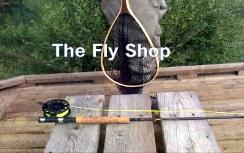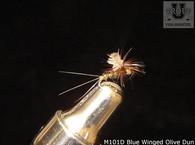
Learn about fly rod and reel material and construction and the important correlation between between fly rod weight, fly rod length and the type of reel. Upon completion of this course, the student will feel secure in his ability to determine the equipment necessary to accomplish his objectives.
The fly rod is the fly fisher’s tool to cast, manipulate line on the water to reduce drag, work the fly (in the case of a streamer), set the hook, and fight the fish. Consequently, it is an important part of the fly fisher’s arsenal. Additionally, the rod must be comfortable to use for a full day of fishing. A number of factors go into choosing the right rod, for the best performance and comfort.
Fly Rod Length
The primary factors to consider in determining the ideal rod length are what type of water you’re fishing, the surroundings, and the size of the fish. For small streams, typically you will go with a shorter rod, perhaps 7’ – 8’ long. This is because they tend to have trees and brush surrounding them, reducing casting room, and because they tend to have smaller fish. For larger streams and lakes, you will want a longer rod (8’ – 9’), to fight the wind, make longer casts, and pursuing larger fish. If you’re only going to have one fly rod for a variety of fishing, you probably want to choose one approximately 8’ long.
Fly rod, reel, and line weight selection go hand in hand. The weights of each of these three pieces of equipment should match. That is, choose the rod and reel weights to match the line weight you will be using. To take it a step further, the line weight is determined by the flies you plan to use: the bulkier the fly, the larger the line weight size. For large flies, you may want a 6 weight line; for small dry flies, you may want a 4 weight line. Furthermore, a smaller weight rod will cast with less effort, allowing you a longer day of fishing without fatigue. Therefore, a good compromise, if you’re on a limited budget, is to use a 5 weight fly rod, reel, and line, to match a variety of situations.
Finally, for the beginner fly fisher, purchasing a fly rod, reel, and line combo package may be the easiest place to start. In a combo package, all three pieces of equipment are already balanced, and it allows “one stop shopping.”
How To Choose A Fly Rod Overview
Fly Reel Material and Construction
The fly fishing reel is a relatively simple piece of equipment; it basically needs to store line and backing. The only other function it has is to provide resistance (drag) when fighting a fish. Finally, the reel should be balanced with the rod and line. Therefore, choosing a fly reel is not overly complicated. Most fly reels are made of aluminum or graphite. While graphite is lighter, and can be less expensive, aluminum is more durable. We recommend a machined (versus cast) aluminum reel, and if you want corrosion resistance, purchase an anodized aluminum reel.
The student should now review more information on rods and reels to gain familiarity:
A gear review on Ross Essence FC fly rods on the MidCurrent web site details some good rods at a very reasonable price.
Recommemded DVDs:
Getting Started Fly Fishing Basics
Top 85 Tips on Fly Fishing for Trout
For commentary on the assignments, the student can read recent Troutu blogs .





